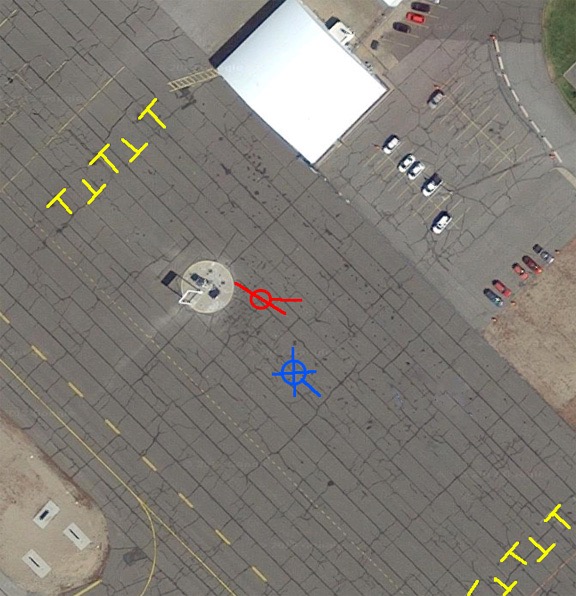Yes, it’s another rant.
Way back in January 2009, I told the story of a flight with family from Wickenburg, AZ (where I lived at the time) to Sedona, AZ. I’d landed at one of the public pads and another helicopter pilot hadn’t been happy about where I parked. He decided to “teach me a lesson” by flying within 15 feet of my waiting passengers, showering them with dust, small pebbles, and flying debris. I reported his sorry ass to the FAA for unsafe flying.
Since then, I haven’t had any similar run ins with any pilots, in airplanes or helicopters. Generally we’re all pretty safety conscious and courteous.
Until today. Today I got a lecture and delivered one in return.
The Setup
It happened at Wenatchee Airport. I’d just dropped off three charter passengers at the jet center on the other side of the airport. I made all my radio calls and hopped across the runway to get some fuel.
Wenatchee has a self-serve fuel island. It’s southwest of the general aviation terminal, southeast of transient parking. I usually come in from the south; that day, I’d come in from the southwest.
I’ve been fueling at the airport for years now and I have an approach and landing routine. The hose is on the southeast side, so if you want to fuel, that’s where you want to park. So I usually come in from the south and hover taxi as close as I can get to the hose reel. They have a heavy JetA hose on the reel and it’s a bear to haul over to the helicopter, so the closer I can get, the better off I am. Because I have two tanks, one on each side, I normally park facing the pumps. If I think I’m going to be more than a few minutes — in other words, I’m going to take a bathroom break or chat with the mechanics or FBO guys — I’ll park a little to one side so another aircraft can get in for fuel.
I very seldom hover taxi around the northwest side of the fuel island. Normally, there are a few light planes parked right there and I’ve seen their wings rock. Besides, to get all the way around, that would mean flying with my tail facing the FBO building. And as anyone who has taken the Robinson Safety Course can tell you, putting your tail rotor facing where some people might be is never a good idea.
As I came in toward the fuel island, I could see a helicopter parked near it on the southeast side. It wasn’t near enough to get fuel — which made sense because it was a turbine (Bell 407) and JetA is not available at the fuel island. As I got closer, it saw that it was far enough from the fuel island for me to fly between it and the island so I did. I landed on the east side, facing the pump. Normally, since I didn’t expect to spend much time there, I would have parked right in front of the hose with my tail pointing away, but that would have put my tail rotor close to the Bell. So I parked to the side.

Here’s a Google satellite image edited to show where I was parked (red) and he was parked (blue). (I have no artistic abilities, so I had to draw stick figure helicopters.) I “enhanced” the yellow tie-down lines so you can see them better. Usually, there are planes parked on the upper ones I enhanced; there was only one there today. There were no aircraft at all on the ramp behind the Bell for at least 500 feet.
The Attitude
As I started the shut down process, I saw a guy come out of the FBO building, walk to the Bell, which was now to my left, and then walk back toward the building. I assumed the Bell was the power line survey ship that I’d been talking to earlier in the area and thought the guy might be the pilot. I was right. When he shut down, he walked over. I assumed he was going to initiate a friendly chat — after all, we’d given each other position reports just an hour before — but I was wrong.
He came to tell me that it was dangerous to fly upwind from a parked helicopter. I replied that we did it all the time at the airport — we do! You should see when four of us crowd around the pumps! — and that I hadn’t given it a second thought. I honestly didn’t think it was a problem. But he did. He pointed out that his helicopter blades weren’t tied down and that his helicopter was worth $4 million.
And that’s when I realized he was talking down to the “Robbie Ranger” he saw on the ramp! To get rid of him — I really didn’t want to argue — I told him I wouldn’t do it again. Then I turned my back on him and continued with my fueling operations. He stormed off into the FBO.
As I fueled, I looked at his helicopter parked there and three things came into my mind:
- I wasn’t that close. I’ve been a lot closer to a lot more aircraft than that — usually for fueling operations. No one has ever complained. Hell, I was closer to the fuel island than I’d ever gotten to his helicopter. Was he just cranky because of the heat or work and decided to take it out on the only other pilot around? (Extra points for talking down to a woman.)
- If he was so damn worried about his blades, why hadn’t he tied them down? Probably because there really wasn’t much to worry about. Don’t you think they take more of a beating in flight through turbulence than they possibly could on an airplane ramp with the wind at about 6 mph? Even with a helicopter flying past?
- Why the hell had he parked there? There were no pavement markings indicating that it was a parking space and he had the entire ramp behind him, stretching back at least 500 feet, without a single airplane or helicopter on it. He wasn’t even close to the building he’d walked into. (Hell, when I park at the airport without getting fuel, I park as close to the fence as possible so people can easily get past me without having to go around.)
I finished fueling and went inside. I asked the FBO manager to make sure that aircraft didn’t park so close to the fuel island if they weren’t refueling. I told him what had happened and he agreed that the guy shouldn’t have parked there. Then we talked about other things.
The Rebuttal
Until the pilot came out of the pilot lounge with his passenger. That’s when I told him that the next time he landed, he shouldn’t park so close to the fuel island.
And then he had the nerve to ask why I couldn’t just fly around him.
Huh? Is that the only place his helicopter can be parked? The rest of the ramp isn’t good enough for him? He has to park close enough to the fuel island to be an obstacle for anyone who comes in for fuel?
Did he think he owned the whole damn airport?
I told him that other aircraft come in for fuel and that he was in the way. That twins come in. That helicopters normally park facing the pump with their tails close to where he was.
He asked me why I was raising my voice. I don’t think I was, but at that point, who knows? I told him it was because I was trying to make him understand the situation.
He made some nasty comments about me being trained to fly but not having any courtesy. And then he left.
By that time, everyone in the FBO was watching. They pretty much agreed that he was a little asshole. (Yeah, he was a little guy. Could have been small man syndrome.) The FBO manager took down his N-number.
 When I went to get my phone, I took this picture. You can see his helicopter to the right side of the shack. There was no one parked behind him for at least 500 feet and absolutely no reason to park so closely to the business side of the fuel island.
When I went to get my phone, I took this picture. You can see his helicopter to the right side of the shack. There was no one parked behind him for at least 500 feet and absolutely no reason to park so closely to the business side of the fuel island.
I went out to close my passenger door, which could have blown off if he started up and moved closer to my helicopter — it did happen once before when some idiot landed right next to me while my door was open; I’m to blame though for leaving it open. I fetched my phone to make a phone call.
When I came back in, they were all watching him start up. I asked them to be witnesses if he hovered close to my helicopter. I wasn’t worried if he did because even though my blades were not tied down, they were positioned so they would not get damaged if blown. But if he did, it would be a further indication of his sucky attitude.
I made my phone call. While I was chatting, he lifted into a hover. I don’t know if he drifted any closer to my helicopter, but he did hover there for a lot longer than what should have been necessary. Then he took off into the wind past my helicopter.
Everyone seemed to breathe a sigh of relief.
I finished my call. I chatted with the FBO guys about the attitudes of helicopter pilots. I told them that people like me flying small pistons are at the bottom of the pile. Guys like that, flying small turbines, sometimes have serious attitude problems and often pick on those flying “lesser” ships. They have to take every opportunity they can to point out how much better their equipment is than ours. Then, when pilots get into mediums and heavies, they tend to be nicer to those of us on the bottom again. They’re secure in their positions and have nothing to prove so they treat us like equals.
“It’s just the guys flying small turbines who can be real dickheads sometimes,” I told them.
We all laughed.
I went outside, started up, and flew home.
And yeah: the helicopter he flies might have cost $4 million. But I own the one I fly.







 When I went to get my phone, I took this picture. You can see his helicopter to the right side of the shack. There was no one parked behind him for at least 500 feet and absolutely no reason to park so closely to the business side of the fuel island.
When I went to get my phone, I took this picture. You can see his helicopter to the right side of the shack. There was no one parked behind him for at least 500 feet and absolutely no reason to park so closely to the business side of the fuel island.